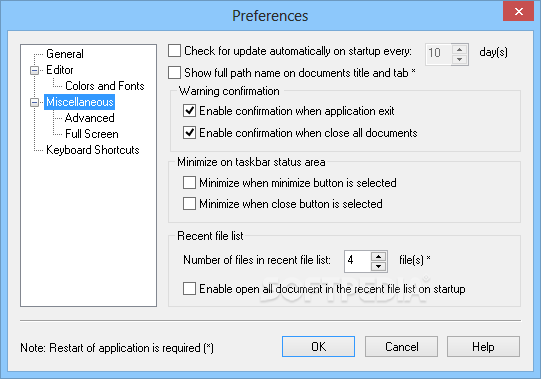

The word Crypto starts with C and therefore must be on the same line with Collection or Checkbox or on a separate line, but with no other lines between the lines with words starting with C. The word Dictionary starts with D and therefore must be on a different line than the words starting with A. The same mistake was made here for the word abstract.

So this word must be on a different line than the word Checkbox which starts with an uppercase C. The word case starts with a lowercase c and the language is case-sensitive. What is wrong in the example above and why? Words starting with the letter A must be on the same line as words starting with the letter a if the language is not case-sensitive.įirst an example for a case-sensitive language with several sorting errors marked with red color:Īnchor Applet Dictionary Area Arguments Array abstract If the language is case-sensitive, the letter A is different from a and so words starting with A must be on a different line from words starting with a. Therefore the macro SortLanguage searches in the language definition line for the word nocase in any case and replaces it always by the correct keyword Nocase before it starts to sort the words.Īll words in the color groups starting with the same character may be on the same line or spread across multiple lines, however if they are spread across multiple lines the lines must be one after the other with no empty lines or other line lines between them. Important for the sorting order of the words in the color groups is the keyword Nocase in the language definition line because it controls among other things the case sensitivity of the words. In key string " File Extensions = " the space before the equal sign is missing.

In key string " Line Comment = " there are 2 spaces before the equal sign. In key string " String Chars = " the space after the equal sign is missing. In keyword " Nocase" the character c is written in wrong case. L20"Example" No c ase String Chars = " Line Comment = // File Extensions = TXTĬompare the first line with the errors with the correct second line. L20"Example" No C ase String Chars = " Line Comment = // File Extensions = TXT An example demonstrating the incorrect usage of keywords and key strings in a language definition line with red marked errors: The language definition line must end with either File Extensions = or File Names = and the list of file extensions or file names of those files of which contents should be highlighted with this syntax highlighting language.Īll keywords and key strings supported by UltraEdit and UEStudio to define how a syntax highlighting language should highlight the contents of a file are case-sensitive and those key strings with an equal sign require exactly 1 space before and 1 space after the equal sign. Normally the name of the syntax highlighting language in double quotes follows immediately the language number. It starts with uppercase /L x with x is a number in the range of 1 to 20. The first line of a syntax highlighting language block in a wordfile is the language definition line. Here are some general information about the sorting requirements of words in a syntax highlighting wordfile for UltraEdit and UEStudio. And also disable word-wrap mode if word-wrap is enabled for the wordfile or by default for new (temporary) files. Uncheck this setting before running the macro. The macro is not working correct if the setting Automatically copy to clipboard when selection is made is enabled at Configuration - Editor - Miscellaneous.
Ultraedit versions windows#
With these versions of UltraEdit for Windows this macro does not work because of two bugs in UltraEdit. That's all, lean back and look what's going on.ĭo not use the macro SortLanguage with UltraEdit for Windows v15. Set the caret anywhere within the language definition you want to sort and start the macro SortLanguage. Also blank lines within the whole language definition are allowed and are removed by the macro during execution. It does not matter if the language definition with words to sort is stored in a file with other language definitions, for example wordfile.txt or wordfile.uew, or the file contains only one language definition. FORTRAN_LANG and the other language markers have no importance on the sort order of the words in the color groups. It handles correct case sensitivity according to Nocase, words beginning with /, substrings defined with ** and also special language settings like HTML_LANG, XML_LANG and LATEX_LANG. Here is what you are waiting for a long time – a macro (set) which is able to sort all words of all color groups of a syntax highlighting language definition.


 0 kommentar(er)
0 kommentar(er)
